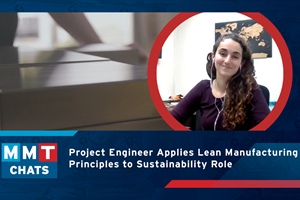Keep Your Friends Close, And Your Customers Closer
Moldmakers were the first wave of manufacturers affected by the outsourcing trend that pushed manufacturing into China.
Moldmakers were the first wave of manufacturers affected by the outsourcing trend that pushed manufacturing into China. But now we’re seeing that business is coming back (see related article on page 30 of this issue). Culture and geography have helped provide a temporary stay for domestic moldmakers. But make no mistake, China and other offshore manufacturing industries will fix these problems, and they will catch up. When they do, the only way to protect against another manufacturing exodus is to ensure that your customers are simply too happy and invested with you to consider leaving. You can do that by getting closer to them.
An effective customer relationship management (CRM) strategy places emphasis on building long-term loyalty over the singular success of individual transactions.
If you can’t compete on price, make sure you deliver an experience that justifies the extra money. To accomplish this, your entire operation must be aligned to deliver more value with each customer interaction. This is where smart business strategy and technology intersect to help you successfully manage each customer interaction at a level that fosters long-term loyalty.
Organize Related Documents and Workflow, and Analyze Customer Habits
When considering the tactical aspects of implementing any effective CRM strategy, selecting the right software solution is a critical step. You touch your customers too many times and in too many ways to control all the variables for which technology can account. Even the most gifted business people don’t remember everything about every customer conversation they’ve ever had. But that’s not necessarily forgivable in the mind of your customer. In fact, they probably remember just about every interaction they’ve ever had with you, especially if they’ve walked away dissatisfied.
A CRM software solution, on the other hand, can capture and organize the history that your business has with every customer and make it accessible to every employee that needs it. This is a powerful proposition as the software does its part to ensure nothing falls through the cracks, disappears into the ether, or leaves your business with the departure of an account or service manager.
But not all CRM solutions are created equally, so it’s important to understand how features and functions will translate into real-world benefits. For example, many best-of-breed solutions can help you manage contacts, communications and customer interactions, but a lack of integration to your core ERP system immediately limits the return you’ll see on your investment.
Conversely, a single, unified solution offering CRM capabilities that are integrated with job management functionality, workflow, and document management allows you to eliminate many redundant manual processes and unites transactional data from ERP with interactional data from CRM. To put it simply, integration helps you understand how your relationship with each customer actually affects your business.
With the ability to capture quotes, design changes, repair and refurbishment requests, ECOs, and any other document or workflow item related to the customer, you begin to establish a comprehensive history of the relationship. This allows you to manage each customer individually, improving your chances of successfully building a long-term, lasting partnership.
This comprehensive history can then be analyzed alongside data from the ERP system, helping you identify which segments of your customer base are most profitable and even which customers offer the most growth potential. It may even help reveal potential opportunities in other markets. For example, if you’ve been highly successful building molds for manufacturers of automotive components, that success may translate to other markets that have similar requirements, such as medical device manufacturers.
Reap the Benefits
The benefits to CRM are not only in the ways it helps you manage the nuts, bolts and logistics associated with your customer, but in truly understanding that customer’s behavior so you can anticipate and even influence it. If we’ve learned anything from this recession, it’s that small manufacturers, including moldmakers, cannot take anything for granted. Finding new ways to get closer to your customers in order to protect them from the competition will be a critical component to future success. CRM technology can provide the structure you need to execute your customer strategy.
Related Content
U.S. Economic Fundamentals Impacting Moldmaking
The economy continues to downshift, capping growth in moldmaking.
Read MoreStrategies for Delivering a Qualified Talent Pipeline for Manufacturers
Insights into the importance of talent in maintaining national competitiveness, the impact of global events on the workforce and practical strategies for developing and implementing effective talent plans.
Read MoreMMT Chats: Project Engineer Applies Lean Manufacturing Principles to Growing Sustainability Role
MoldMaking Technology Editorial Director Christina Fuges catches up with MMT’s 30-Under-30 Honoree Katherine Pistorius, who has added Regional Sustainability Coordinator alongside her Project Engineer duties, which demonstrates the many paths one can take in a manufacturing career. Here she shares how this opportunity unfolded for her and what the job entails today and in the future. This episode is brought to you by ISCAR with New Ideas for Machining Intelligently.
Read MoreTreatment and Disposal of Used Metalworking Fluids
With greater emphasis on fluid longevity and fluid recycling, it is important to remember that water-based metalworking fluids are “consumable” and have a finite life.
Read MoreRead Next
How to Use Continuing Education to Remain Competitive in Moldmaking
Continued training helps moldmakers make tooling decisions and properly use the latest cutting tool to efficiently machine high-quality molds.
Read MoreReasons to Use Fiber Lasers for Mold Cleaning
Fiber lasers offer a simplicity, speed, control and portability, minimizing mold cleaning risks.
Read MoreHow to Use Strategic Planning Tools, Data to Manage the Human Side of Business
Q&A with Marion Wells, MMT EAB member and founder of Human Asset Management.
Read More



















